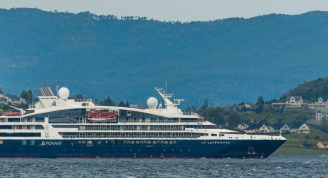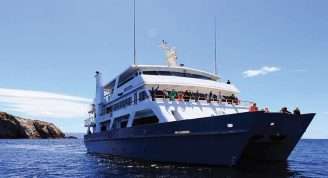Description
Join us onboard Coral Adventurer as she returns to operations in January 2021 for an all-new 12-night expedition immersion. This voyage uncovers the biodiverse ecology, intriguing maritime history, and the outer limits of the Great Barrier Reef and Coral Sea.
Plunge below the surface into the extraordinary habitats where abundant marine life awaits. Explore one of the world’s best dive sites at Holmes Reef, and snorkel at some of the Coral Sea’s most remote reefs, such as Marion, Frederick & Cato Reefs. Along the way, step ashore on deserted cays at Herald Cays & Diamond Islets for beachcombing, hiking, and relaxing sunset drinks. Get close to nature with opportunities for incredible birdwatching, and snorkelling among vibrant schools of pelagic fish and green sea turtles. Our expert guides will share great stories and insights of Australia’s maritime history as we follow the wake of early navigators.
Onboard, you will be accompanied by expert guides including a Marine Biologist. Our purpose-built ships are custom built for expedition cruising, with refined steering capabilities, shallow draft and nimble explorer tenders we will bring you closer to remote sites and natural habitats. You will enjoy freshly prepared small-batch cuisine featuring the best local ingredients and relax and enjoy quality local beers and wines. With an intimate atmosphere and our renowned Australian hospitality, you will quickly feel at home and make connections with new friends.
Guest Lecturer Damon Ramsey: Damon Ramsay is a marine biologist and author who has worked as guide and lecturer around the world. He produces humourous videos exploring various ecosystems, and runs a ‘field guide to the planet’ website.

















